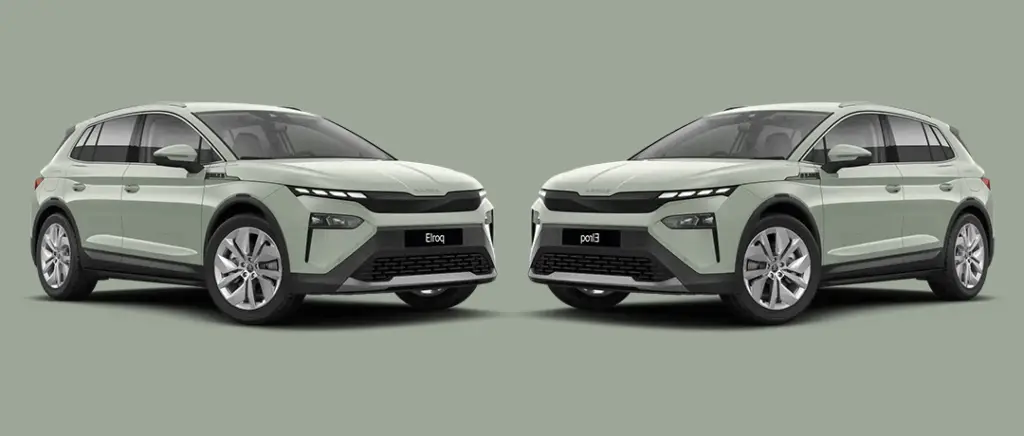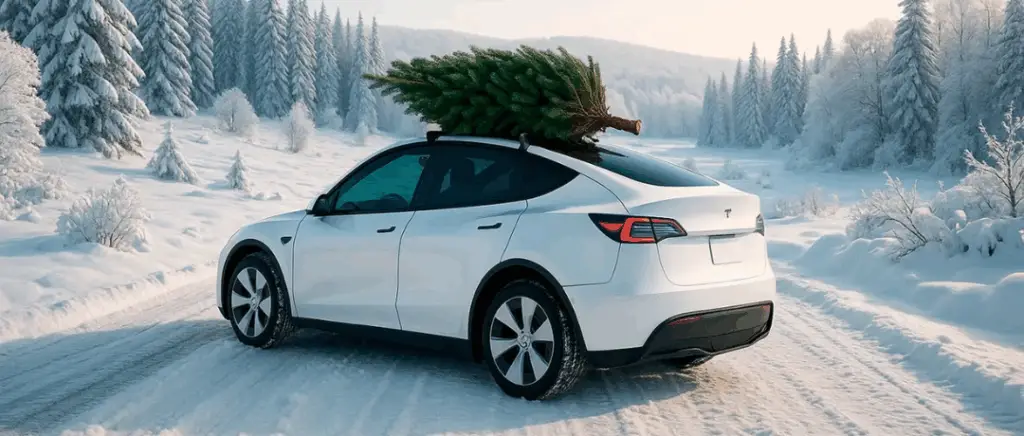Monday to Friday
9am - 12.30pm - 2pm - 7pm
The battery is the heart of electric cars, and recent innovations promise to revolutionise the field. Here are the latest trends:
Lithium-ion batteries
Usually used in portable devices, electric batteries use lithium as the active material. Their high energy density means they last longer and self-discharge less. They also enable electric cars to perform better between recharges.
Innovation and ongoing research
Researchers and companies are constantly looking for ways to increase battery capacity, speed up charging times and reduce costs. This innovation is essential if we are to meet the growing demand for electric vehicles and make them more accessible.
Solid state batteries
These batteries are made from solid materials such as ceramics. They offer a number of advantages. They offer greater energy density and faster recharging, while reducing the risk of fire. Companies such as Quantumscape and Volkswagen are currently working on this technology, which could be available as early as 2025.
Sodium-ion batteries
Less expensive than lithium-ion, these batteries use sodium and could reduce overall costs. However, they may not offer the same performance in terms of range and charging time as lithium-ion batteries. These advances promise to make electric cars more efficient, safer and more affordable, contributing to wider adoption and a more sustainable future.
Also read → External batteries for electric vehicles: a purely utopian project
Autonomous driving systems
Autonomous driving systems are innovations that enable drivers to drive in complete safety. They are spread over several levels: level 0 (no automation), levels 1 and 2 are driver assistance systems, levels 3 and 4 are semi-autonomous systems. From level 5 onwards, we can speak of almost complete automation for the driver, and here are a few examples:
- automatic emergency braking (AEB) : sensors to detect obstacles and adapt to the situation,
- lane keeping system : camera follows the lines of the road to help the driver stay in the right lane,
- lane departure warning system : cameras to detect electric vehicles in blind spots,
- adaptive cruise control (AAC) : radar to maintain a safe distance from the vehicle in front.
Many electric vehicles are already equipped with them. Tesla and its Model S offers this type of technology, with numerous cameras, radars and ultrasonic sensors on board. For its part, the Co-pilot 360 technology of the Ford Mustang Mach-e enables it to avoid pedestrians and cyclists and anticipate collisions.
Also read → Connected and autonomous cars: how does it work?
Digital dashboards and touch screens
In 2023, large dashboards are a standard feature of electric vehicles, part of the user experience. Like a Kia EV6 or the Mercedes EQS It is no longer unusual to see touchscreens larger than 10".
Touchscreens are larger and offer more functions than ever before (satellite navigation, Wi-Fi connectivity, voice control). They can therefore access information more quickly. This is also due to higher resolutions and faster response times than before.
Manufacturers have adapted perfectly to the needs of the market, offering ever more intuitive interfaces that give novices easier access to the latest innovations. Menus and controls are increasingly easy to understand, so drivers can concentrate fully on the road. These technologies promise to develop even further in the years ahead. Some examples stand out.
La Tesla Model 3 is equipped with a 15.5" touch screen.
It includes all the major functions, and some of them are more fun. Boombox broadcasts fun sounds outside the vehicle, while Toybox offers a catalogue of funny stories and videos for younger children. The Hyundai Ioniq 5with its 12.3" touchscreen, features an augmented reality mode that projects information onto the windscreen. Its film mode lets you immerse yourself as if in a cinema with its many films and programmes.
Energy regeneration during braking
This innovation has been around since the early days of electric cars. Nissan Leaf was one of the first to be fitted with this system. It enables the electric vehicle to recover energy when braking to increase its range. Manufacturers such as Tesla, Audi and Porsche are working non-stop to increase the power of this technology.
They do this by rethinking the design of electric motors, brakes and control systems.Some top-of-the-range models are already benefiting from these technological advances, such as the Porsche Taycan which uses this technology to adjust power according to driving conditions. It also benefits from smoother braking.
Advanced driver assistance
Advanced assistance covers active safety, comfort and convenience for the driver, with the aim of preventing accidents. They comprise :
- head-on collision avoidance systems
- automatic parking systems
- assisted navigation systems
Nevertheless, these innovations, while safer, more comfortable and easier to use, still pose a number of challenges. There are many challenges, such as the limitations of sensors: the cameras in an electric car may well be blinded by poor weather conditions, which could affect the safety of passengers on board. You also have to bear in mind that these are very recent and relatively expensive technologies.
Some radars may not be able to detect certain small objects. Finally, there is as yet no clear legal framework for this type of assistance, so it is important to be aware of the rights of both pedestrians and passengers in autonomous vehicles. In the years to come, electric vehicle brands will necessarily have to work with governments and regulators to ensure safe and ethical electric vehicles.
Also read → What future for artificial intelligence in the clean car?
High-quality audio systems
Like the dashboard, the audio system is part of the user experience. Naturally quieter than a combustion engine car, audio systems help to mask outside noise (wind, rain), creating a more pleasant and comfortable environment for passengers. They are also essential for passenger safety (lane departure warning, impending collision sensors). These aids help drivers to stay focused and avoid accidents.
New materials such as composite materials (carbon nanoparticles) are being used to improve sound quality. These materials include acoustic materials and intelligent materials.
The use of digital audio, the spatialisation of sound and artificial intelligence all help to improve sound quality.

La BMW IX3 is equipped with the latest audio features from the manufacturer Bang & Olufsen.
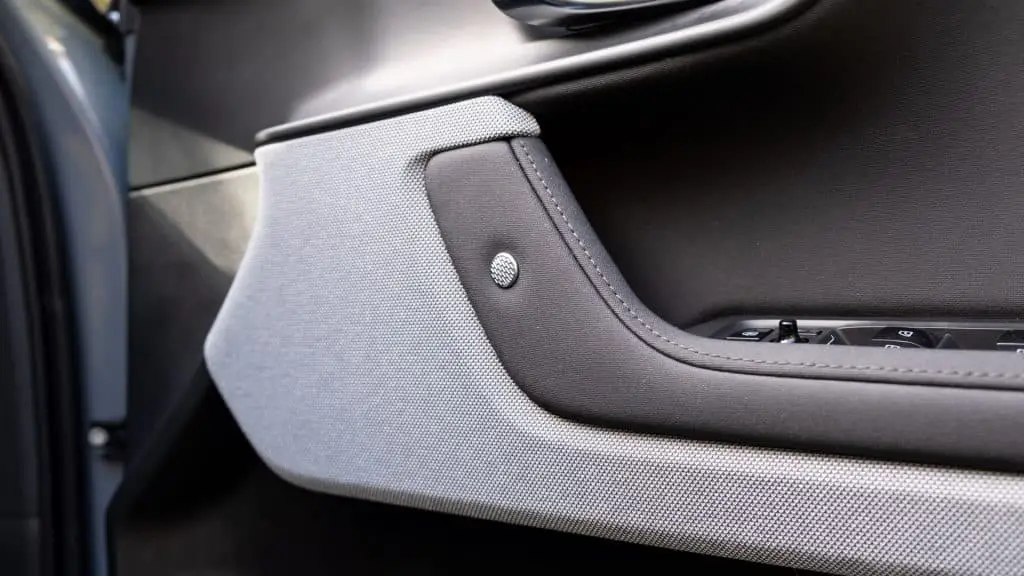
La Polestar 2 has 13 Harman Kardon speakers.
Audio systems are therefore increasingly integrated with other electric vehicle systems, such as infotainment and autonomous driving systems.
Solar roofs
Solar roofs are an innovation in the field of electric cars. They generate electricity from the sun. This energy is used to power the vehicle, reducing its dependence on oil, natural gas and coal, for example.
As well as contributing to sustainable development, they provide up to 15 % of range, which is useful in areas where there are few charging points. They also reduce operating costs. The electricity generated is free, so the cost of the electricity used to recharge the vehicle's battery is reduced.
There are a few drawbacks, however. Solar roofs can be expensive to install, and they can be ineffective on cloudy or rainy days. In terms of performance, solar roofs increase the weight of the vehicle, which ultimately reduces its acceleration.
This technology is therefore promising, and technological advances could make it more accessible and popular in the years to come. It could even be used to power infotainment or air-conditioning systems.
Also read → Sono Sion, the long-awaited electric car with solar panels
Innovative aerodynamic designs
The budgets of electric vehicle brands research and development into new aerodynamic designs is on the increase. The aim is to improve the energy efficiency of electric vehicles. Numerous innovations are appearing on the design front:
- more refined shapes: most electric vehicles have smooth, flowing shapes to reduce drag aerodynamics,
- the addition of moving parts such as active spoilers to improve aerodynamics,
- the use of lightweight materials such as carbon fibre.
There is still a great deal of research to be done in the development of aerodynamic designs and manufacturers are working to improve this technology in the years to come.
Also read → Future electric cars up to 2024
Intelligent lighting
Safety, visibility and aesthetics: the latest innovations in intelligent lighting aim to combine and meet these three needs.
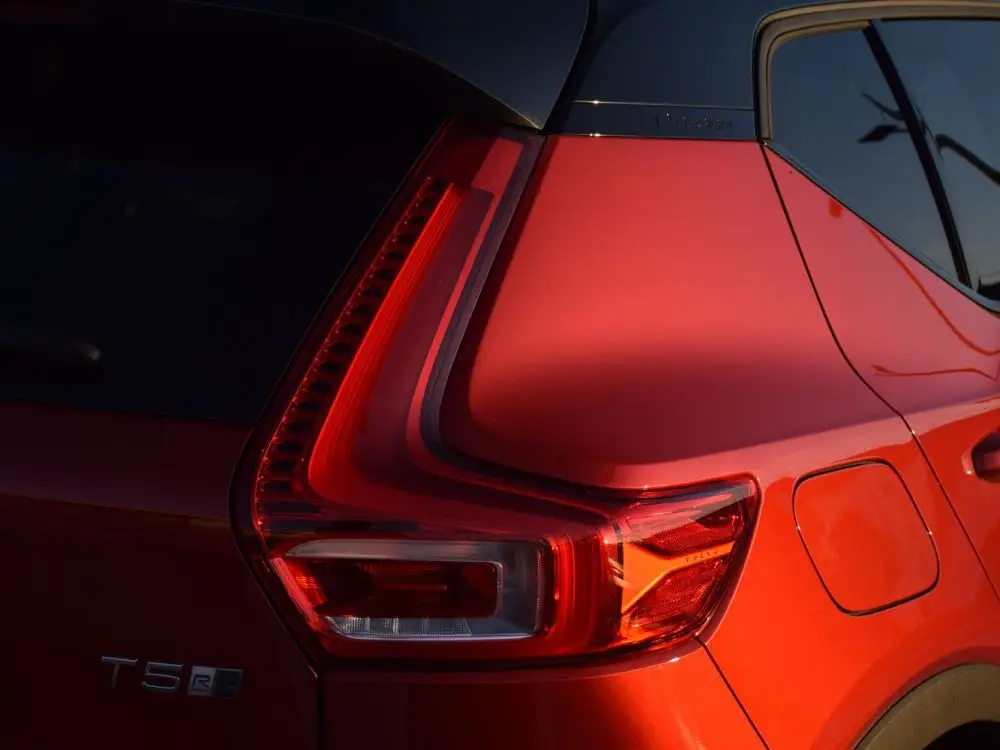
La Volvo XC40 Charging offers matrix LED lights that adapt to driving conditions and vehicle direction.

La Nissan Ariya is equipped with LED front lights that follow the movement of the steering wheel and offer a range of over 600 m.
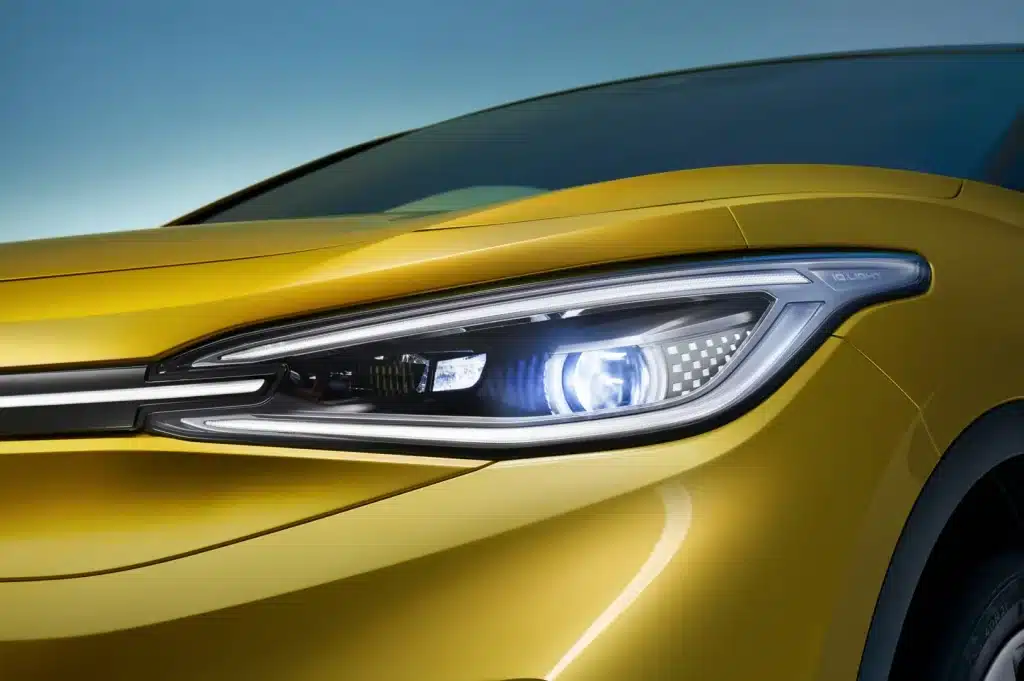
La Volkswagen ID.4 has ultra-powerful laser lights for high visibility and low energy consumption.
The new electric vehicle lighting looks promising for the future. The major manufacturers have been able to adapt to demand and meet road safety requirements while maintaining an attractive appearance.
Connectivity with smartphones
Well established in combustion-powered cars for some years now, on-board connectivity in electric vehicles is continuing to develop. Smartphone integration is becoming increasingly fluid and intuitive. New functionalities such as wireless charging and compatibility with voice assistants are emerging.
In addition to these features, which we see on all new electric cars, carmakers are adding more specific functions to connectivity systems. Artificial intelligence enables autonomous driving, energy management and personalisation of the driver experience.
Current and forthcoming major innovations include :
- screen projection,
- wireless charging,
- compatibility with voice assistants,
- navigation based on artificial intelligence,
- music streaming services,
- voice control of vehicle functions,
- 5G and Wi-Fi 6.
Also read → The best applications for electric cars in 2023
Conclusion
Progress in the electric vehicle sector is crucial to the development of future sustainable mobility, and is also at the heart of the competition between manufacturers. These developments will inevitably change the way we drive and the way we think about electric cars.
As well as enhancing the driving experience, it contributes to the well-being of passengers. Ready to take the plunge? Contact our Beev experts if you have any questions. We'll get back to you within the hour.































